Foraging class Sunday in southwest Florida was quite productive. We had the opportunity to sample Ground Cherries, Jambul Fruit, and Cereus fruit. Other nibbles included Hairy Cowpea blossoms, sea purslane, common purslane, arils, and Blue Porterweed blossoms. We even managed to see a bees’ hive but we left the honey alone. This week the foraging class goes about 120 east to West Palm Beach.
One of the more common edible weeds underfoot in North America is Carpetweed, Mollugo verticillata. Scraggly if not scrawny the wispy plant does have the saving grace that it is all edible, raw or cooked and it requires very little cooking. Add it last. There are several non-edible species that can resemble it so there are some of key points to remember. First, it does not have any white sap, it grows in a circular mat, and the blossoms have five white sepals but usually only three stamens, sometimes four or five but usually three, which is a bit odd for a five- sepal plant. Look for it in dry, sandy locations including waste ground. For all of its wide-spread presence in North America it is actually native to the tropical Americas. You can read about Carpetweed here.
Many years ago I would go foraging with the legedary Dick Deurling and Dr. Jose Gotts. Dr. Gotts, a professor at the University of Central Florida, was a character. Short, bald and portly he often went on a forage wearing only white shorts and dark horn-rimmed glasses. And nearly every time he would eat something controversial. I once saw him taste a Lubber, which is a large, toxic grasshopper. That would be about the time when Dick would announce to the group not to do what Jose had just done because Gotts grew up in war-torn Algeria and had an immune system primed differently than the rest of us. It was an interesting warning. Should you, for example eat fruit that has fallen on the ground? I do so the question perhaps is- – is this a harmful practice? The answer is a clear maybe yes maybe no.
Surprisingly there has been research on how much bacteria dropped food can pick up. It depends on what is dropped and where it lands. For example watermelon dropped on a tiled floor picks up a huge amount of bacteria almost instantly whereas a dry gummy bear on carpet very little. The harder the surface not only the more bacteria but the longer the bacteria can live which seems counter intuitive. Essentially it is the type of surface the food lands on that is important then how much bacteria is on that surface and lastly what kind of bacteria.
Excluding wild food, Americans get up to 800,000 cases of food poisoning a day… yes a day. And the rate of food poisoning from commercially grown food has doubled since 2000. About a third of it is from commercial fruits and vegetables and usually that’s contaminated with the bacteria E. coli, sometimes salmonellosis, rarely a Cyclospora parasite. Most wild plants and fruit don’t have that those pathogens. Another problem with commercial fruits and vegetable — compared to wild food — is that they can be handled by several customers and store personnel before you pick it up. Thus generally said wild food that is only touched by you is safer and usually the soil not contaminated. More so washing in plain water can also get rid of 98% of bacterial on such food though truth be told I can’t remember the last time I washed any wild food before consuming it. Not a worry high on my list.
If there is a high count of bacteria on a wild fruit or vegetable it will usually be on a bruised or rotting spot. I make jokes in classes about plants being watered by poodles but that’s not really a concern. Urine is fairly sterile and the rain washes off nearly everything. Where one does need to exercise some caution is where dogs (and especially cats) go to the bathroom. Their scat, particularly cats, can foster parasites in the soil. It might be that if you have pets your own back yard is the most hostile soil near you. Indeed most parasites in children come from pet-contaminated soil in their own yard, and usually from cat scat.
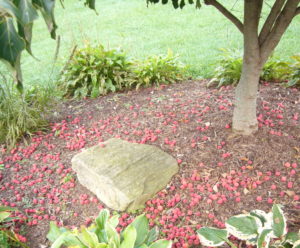
Bumpy fruit, bumpy surface, down they go.
So what am I usually eating off the ground — usually dry sandy ground– or sidewalks? Persimmons, Jambul fruit, sea grapes come to mind and mulberries. I also eat purslane — mentioned earlier — where I find it not bothering to wash it unless it is a dusty location. And also note most research and commentary on food bacteria was written about commercially contaminated food and before we had a greater interest in our gut biome. It just might be that eating wild food adds diversity to our gut bacteria and increases our resillience.
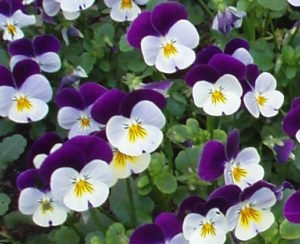
Mom’s favorite septic snack, Violets.
We can detect at least two themes regarding food and bacteria: Commercial food is usually contaminated with stuff from human waste, so food grown over the septic drain field might be questionable. And some soil can be contaminated by cat or dog waste, usually your own back yard. I think it wise not to forage around a dog park and don’t let your dog or cat use your garden for a bathroom. That said I grew up in a house with a septic drain. Wild violets grew in that ditch profusely and my mother ate them raw all the time. She almost made it to 90 and would have made a century if she hadn’t smoked.
And while we should have some concerns about the wholesomeness of wild food I think a greater concern than bacteria is whether the ground or water has been polluted by non-bacterial means. How to assess for environmental contamination will be covered in a separate article.
Upcoming Foraging Classes:
Sunday, October 9th, Dreher Park, 1200 Southern Blvd., West Palm Beach, 33405. This class is cancelled because of Hurricane Matthew. While the weather might be good Sunday clean up, traffic and whether the park will be open are issues. The class has been rescheduled for October 23rd. Same time.
Sunday, October 16th, Florida State College, south campus, 11901 Beach Blvd., Jacksonville, 32246. 9 a.m.
Sunday, October 23rd, Dreher Park, 1200 Southern Blvd., West Palm Beach, 33405. 9 a.m.
To learn more about the classes go here.
Want to identify a plant? Looking for a foraging reference? Do you have a UFO, an Unidentified Flowering Object you want identified? On the Green Deane Forum we chat about foraging all year. And it’s not just about warm-weather plants or just North American flora. Many nations share common weeds so there’s a lot to talk about. There’s also more than weeds. The reference section has information for foraging around the world. There are also articles on food preservation, and forgotten skills from making bows to fermenting food. You can join the forum by clicking on the button on the upper right hand side of this page.
All of Green Deane’s videos are available for free on You Tube. They do have ads on them so every time you watch a Green Deane video I get a quarter of one cent. Four views, one cent. Not exactly a large money-maker but it helps pays for the newsletter. If you want to see the videos without ads and some in slightly better quality you can order the DVD set. It is nine DVDs with 15 videos on each. Many people want their own copy of the videos or they have a slow service and its easier to order then to watch them on-line. They make a good gift for that forager you know. Individual DVDs can also be ordered. You can order them by clicking on the button on the top right of this page or you can go here.
This is Newsletter 227.
If you would like to donate to Eat The Weeds please click here.


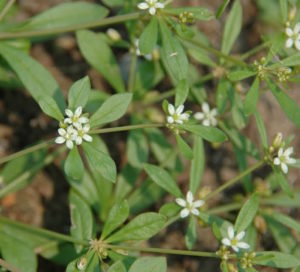
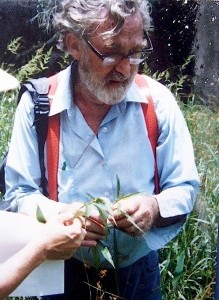



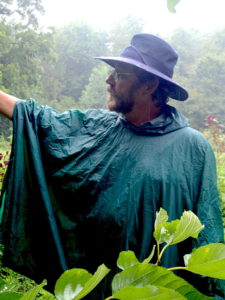

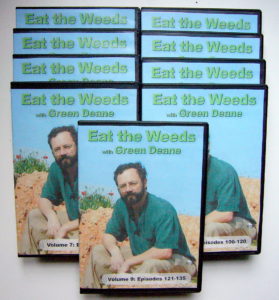

When will you conduct a class in the Panama City area?
Respectfully
Ed
I’d love to do a class there, I just don’t have a good location that I know of.
I love physalis walteri! I have them all around my house!!
When I was young and growing up in pre-Disney central Florida, I would constantly walk the woods and fields and frequently came across wild beehives and swarming colonies. Swarms we tried to collect in hive boxes, and wild bee trees we would mark for future harvesting. I travel over three states frequently today and raise a garden. Not only do I not discover wild colonies, but have only come across 2 swarms in the last ten years. One year ago I discovered a swarm and boxed it up and carried it to a hollow tree near my home. Miraculously they colonized the tree and for the first time in the ten years I have been here, I had bees working in my garden this spring. There are no bees in my garden. Recently a mosquito spray truck was coming down my street which dead ends into a bayou. I stopped him up at the head of the street and ask him not to come down our street because he would kill my bees. He said he didn’t have a choice that his boss told him to spray.
The next day all my bees were dead in their hollow tree and on the ground around the tree. We need to quit worrying about what is going on overseas with foreign agriculture and start taking care of our bees before we lose American agriculture all together and starve to death.
I took a bag full of dead bees to our city and county offices and dumped them on their desks. They swear that the mosquito spray did not kill them that it had to be some other environmental cause. BOLOGNA!
They also claim the spray does not affect our shellfish and other aquatic life. Bologna.
Please write you congressmen and Department of Agriculture leaders and ask them why they are not more worried about our bees than they are about aqua-farming in some third world country. Without bees most of our crops would fail.
What county do you live in? How far off the road do you live where they sprayed? I would like to call and find out what they are using to spray and see if they are using that same spray here. I live at the end of a paved road way off the road and they are not allowed to come up my driveway… I am trying to grow as many trees as I can between my house and their spraying
Tracy ~~
Hey there! Just found a bunch of Black Trumpet Mushrooms in my yard in Citrus County anyone else finding them? Got any good recipes for them?
Deane,
There is a Bay County Park about 15-20 miles north of Panama City that would be perfect for your classes. It is a huge sports complex now with ball fields, etc., but it fronts the only canyon in Florida. This park used to be called Deep Canyon Park. I discovered it when I was researching ghost stories for a book I wrote back in the ’90’s called The Great Florida Ghosthouse Directory. There is a very diverse ecosystem inside the canyon with a crystal clear stream at the bottom. The Park Complex is just north of the intersection of Highway 20 and 231 in the community of Fountain. Check Bay County Parks and Recreation web site.